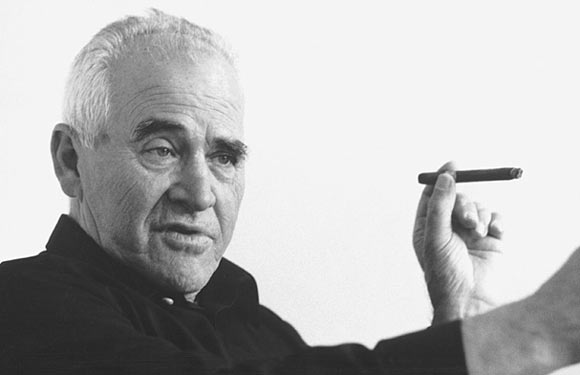
Otl Aicher was an eminent German graphic designer and typographer. His most notable works include the pictograms that he designed for the 1972 Summer Olympics in Munich. His use of stick figures for public signage had an influential effect on graphic designing. Besides, he was also the co-founder of the Ulm School of Design.
Born on May 13, 1922, Aicher grew up in Ulm, the south-western state of Baden-Württemberg. He was a close friend and classmate of Werner Scholl and through him he met his family known for their involvement in White Rose non-violent resistance group. Werner’s siblings were executed by guillotine for being members of White Rose. Aicher himself dissented from Nazis tyrannical hold on Germany and upon his refusal to join the Hitler Youth, he was arrested in 1937. As a result, they didn’t let him make it through his college entrance test. Later he was conscripted into German army to fight during the Second World War, although he made several attempts to leave the army. Eventually, an opportunity presented itself and he deserted the army. The Scholl family let him hide at their residence in Wutach, in 1945.
Finally, the war came to a halt in 1946, upon which Aicher enrolled himself at the Academy of Fine Arts Munich to study sculpture. The following year he launched his own studio in Ulm. He married into Scholl family to his friend Werner’s elder sister, Inge Scholl. Soon after, in collaboration with his wife and Max Bill, he established the Ulm School of Design. In brief period of time it became a successful art institute and remained one of Germany’s leading educational centers till its closure in 1968. The notable designers who either attended or taught there include Peter Seitz and Tomás Maldonado.
Furthermore, Aicher also had a keen interest in corporate branding. He was requested to design the logo for German airline, Lufthansa which came out in 1969. Besides that, he was approached by the organizers of the 1972 Summer Olympics, offering him the Olympic Games’ lead designer’s position. The instruction he received from the organizers included that the design must complement the architecture of the newly built stadium in Munich. For consultation, Aicher approached Masaru Katsumi, who designed for the previous 1964 Tokyo Olympic Games. Reviewing the ’64 Games design, he based his work partly on previously employed iconography and created a set of pictograms.
These pictograms were developed with the intention of presenting a visual interpretation of the sport the stadium featured. This careful creation of pictograms helped athletes and visitors find their way around the Olympic village and stadium. He made use of Univers typeface for the Olympic designs. In fact, Aicher’s technique of representation through design was adopted by the United States Department of Transportation as they developed the DOT pictograms in 1974. Soon those signage were used publically around the globe, for instance for toilets and telephones. Moreover, he is credited for creating the Munich Olympics logo and the first official Olympic Mascot, a dachshund.
In his later career, Aicher consulted the kitchen company bulthaup and developed Rotis font family in 1888. The logo of Munich Airport featuring letter M in a simple sans-serif font is another one of his noted creations. Otl Aicher wrote books on several subjects including art and design. Some of his well-known works include The World as Design, Inside the War, The Kitchen is for Cooking, Critique of the Automobile and Analog and Digital. In 1991, Aicher passed away in a tragic traffic accident.

